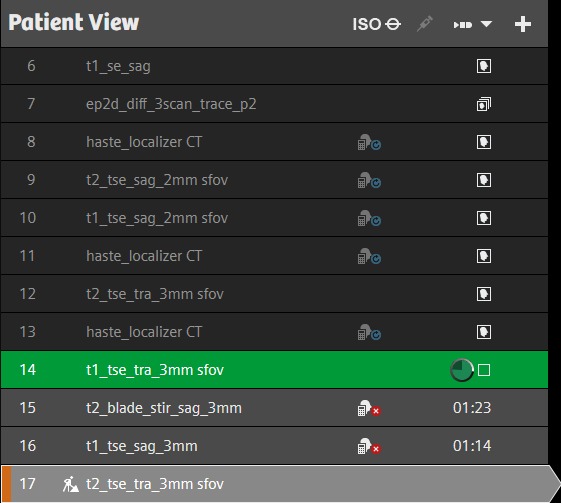Introduction
Magnetic Resonance Imaging (MRI) is a powerful medical imaging technique that has revolutionized the way we diagnose and treat various medical conditions. MRI protocols play a crucial role in ensuring the success and accuracy of MRI scans. In this comprehensive guide, we will delve into the world of MRI protocols, exploring what they are, why they matter, and how they are tailored to specific medical needs.
What Are MRI Protocols?
MRI protocols are a set of predefined parameters and instructions that guide the acquisition of MRI images. They encompass a range of variables, including the type of MRI machine used, the imaging sequences, the positioning of the patient, and the choice of coils (devices that transmit and receive signals). These protocols are meticulously designed to optimize image quality and obtain the most clinically relevant information.
Why Do MRI Protocols Matter?
- Consistency: MRI protocols ensure consistency in image acquisition. Standardized protocols minimize the variability in images, making it easier for radiologists to compare scans over time or between different facilities.
- Diagnostic Accuracy: Tailored protocols help capture specific anatomical and pathological details. For instance, a brain MRI protocol will differ significantly from a knee MRI protocol, as different structures and pathologies need to be visualized.
- Patient Comfort and Safety: Protocols also consider patient comfort and safety. Optimized sequences reduce scan time, minimizing patient discomfort and exposure to the magnetic field.
- Efficiency: Efficient protocols can lead to quicker scans, which can be particularly important for patients who may struggle with lengthy imaging sessions.
Components of MRI Protocols
MRI protocols consist of several key components, each crucial for obtaining high-quality images:
- Imaging Sequences: MRI machines use various imaging sequences, such as T1-weighted, T2-weighted, and diffusion-weighted imaging. These sequences are chosen based on the information needed.
- Coils: Different coils are used to optimize signal reception and transmission for specific body parts. There are coils designed for head imaging, body imaging, and extremity imaging, among others.
- Slice Thickness: The thickness of each image slice affects image resolution. Thinner slices provide more detailed images but may require longer scan times.
- Contrast Agents: Some MRI protocols may involve the use of contrast agents to enhance the visibility of certain tissues or pathologies.
- Patient Positioning: Proper positioning of the patient is crucial to obtain accurate images. This includes aligning the body part of interest with the MRI’s imaging plane.
Common MRI Protocols
MRI protocols can be tailored to various medical needs, and some common protocols include:
- Brain MRI Protocol: Used to assess neurological conditions, brain protocols may include T1-weighted, T2-weighted, and fluid-attenuated inversion recovery (FLAIR) sequences.
- Abdominal MRI Protocol: This protocol focuses on the abdominal region and may involve dynamic contrast-enhanced imaging for liver and vascular studies.
- Musculoskeletal MRI Protocol: Designed for assessing joints, muscles, and bones, this protocol includes various sequences like T1-weighted, T2-weighted, and fat-suppressed sequences.
- Cardiac MRI Protocol: Utilized to evaluate the heart and blood vessels, cardiac protocols involve specialized sequences like cine imaging and myocardial perfusion imaging.
Conclusion
MRI protocols are the backbone of modern diagnostic imaging. They ensure that MRI scans provide accurate, reliable, and clinically relevant information for healthcare professionals. Tailored to specific medical needs and anatomical regions, MRI protocols play a pivotal role in improving patient care and advancing medical knowledge. As technology continues to evolve, so too will the sophistication and precision of MRI protocols, ushering in a new era of diagnostic excellence in healthcare.













